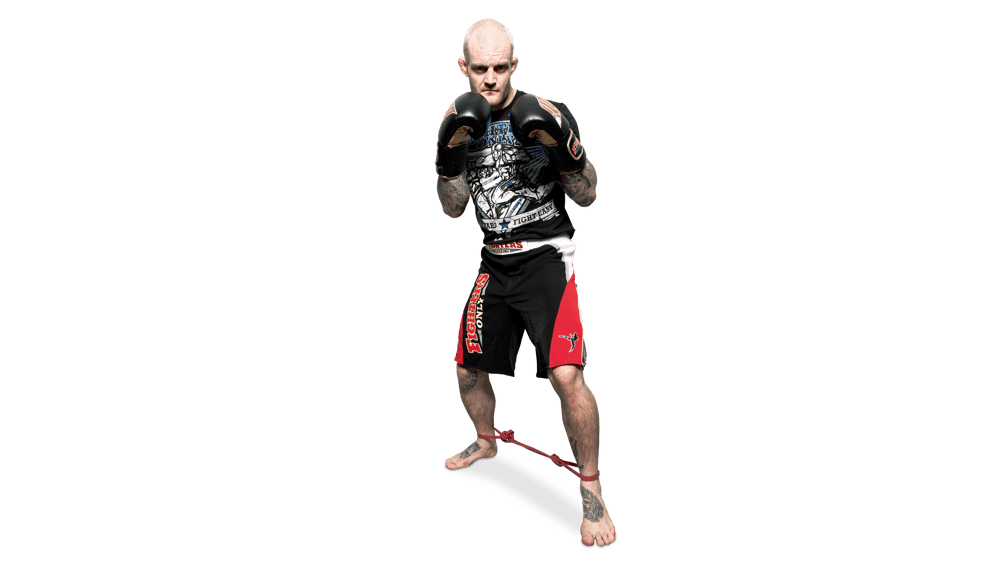
Issue 089
June 2012
TUF 14 cast member Paul McVeigh is a sports scientist and a pro fighter, ranked as the number-one bantamweight in Europe. Making a defense for the aerobic system; it doesn’t have to mean hours plodding around your neighborhood.
The aerobic system has had a lot of bad press in the world of MMA conditioning. Maybe it’s just not sexy enough for those UFC Primetime shows and I will admit, I would rather watch someone going mental on the ‘circuit of unrelenting pain,’ than watch a fighter run slowly down a street. The Primetime producers probably know this and maybe we should all stop getting our strength and conditioning info from what the TV guys are telling a fighter to do to get a cool shot.
Over the years I’ve started to understand there are major physiological benefits to be had from aerobic training (low cardio intensity), that can’t be achieved purely by anaerobic methods (high cardio intensity). Yet many coaches use the argument that MMA is an anaerobic sport and training the aerobic system is a waste of valuable time.

Are combat sports anaerobic?
Like so many answers in strength and conditioning the answer to that question depends. It depends on the type of fight (i.e. high-paced grappling vs low-paced counter striking) and the type of fighter. What is apparent is that a large portion of every fight takes place predominantly in the aerobic system. When you are utilizing footwork, holding position, throwing singles and sitting down in between rounds it is all aerobic in nature. When you do start going after it more, the anaerobic lactate and creatine phosphate systems come into play to generate more sustained powerful actions. Relying on these systems constantly (i.e. going into cage-rage mode in an attempt to finish) will lead to fatigue.
If your aerobic system has been trained to provide energy at a higher work output, you will need to go towards the fatiguing anaerobic system less often, or have the ability to choose to go there more often in an attempt to overwhelm your opponent. But if you do dip into the anaerobic pot a little too much and begin to fatigue it’s the aerobic cardiovascular adaptations that really help with your recovery.

An alternative to roadwork
When people think about aerobic training in combat sports they immediately think of roadwork. It’s easy to do, always accessible and no one is going to distract you from getting your aerobic adaptation on.
My problem with roadwork comes from the overuse injuries that come along with it. You’re repeatedly putting several times your body weight through your knees and spine with every foot contact and this can lead to some nasty lower-extremity issues. I have trained a lot of middle- and long-distance runners in the past and they typically tend to be more beat up than guys who are trying to beat each other up on a daily basis.
But who says aerobic training has to be done by using a repetitive monotonous modality like running, cycling or those goofy elliptical machines? My favorite way to do this type of training is to grab an undersized white belt and jiu-jitsu maul them for 60 minutes. If you are rocking more human compassion than I am you can also grab someone and roll light and simply exchange positions for a prolonged period with no rest.

Other interesting ways of getting your aerobic training on include shadowboxing, light bag work, footwork drills, body weight exercise, glove drills and technique practice. If you are like me and have the attention span of a depressed goldfish these modalities can be combined in six 10-minute periods to form a 60-minute circuit. Whatever method you use the guidelines are the same: maintain a heart rate between 130–150 beats per minute for between 30–90 minutes. Aerobic adaptations are frequency dependent so try to do it three times per week on top of skill training when looking to focus on improving your aerobic fitness.
With these methods you are improving your conditioning and developing your skill-set. Who wouldn’t benefit from an extra three hours of technique practice a week? Beat that, roadwork!
Aerobic training is a valuable tool for developing as an athlete long term. When no fights are scheduled, four to six weeks focusing on aerobic methods is a great way to improve work capacity and conditioning. The aerobic system has the most potential for improvement but is still one piece of the conditioning puzzle. At different times we must focus on the anaerobic lactate system and at others the creatine phosphate system. Ignoring any of the systems will only limit your athletic potential.
ROADWORK ALTERNATIVES
- Jiu-jitsu
- Shadowboxing
- Light bag work
- Footwork drills
Maintain a heart rate between 130-150 BPM for between 30-90 minutes.
PRO TIP
If you are super keen on pounding the pavement try to make sure you have an intimate relationship with a roller or a masseur.










